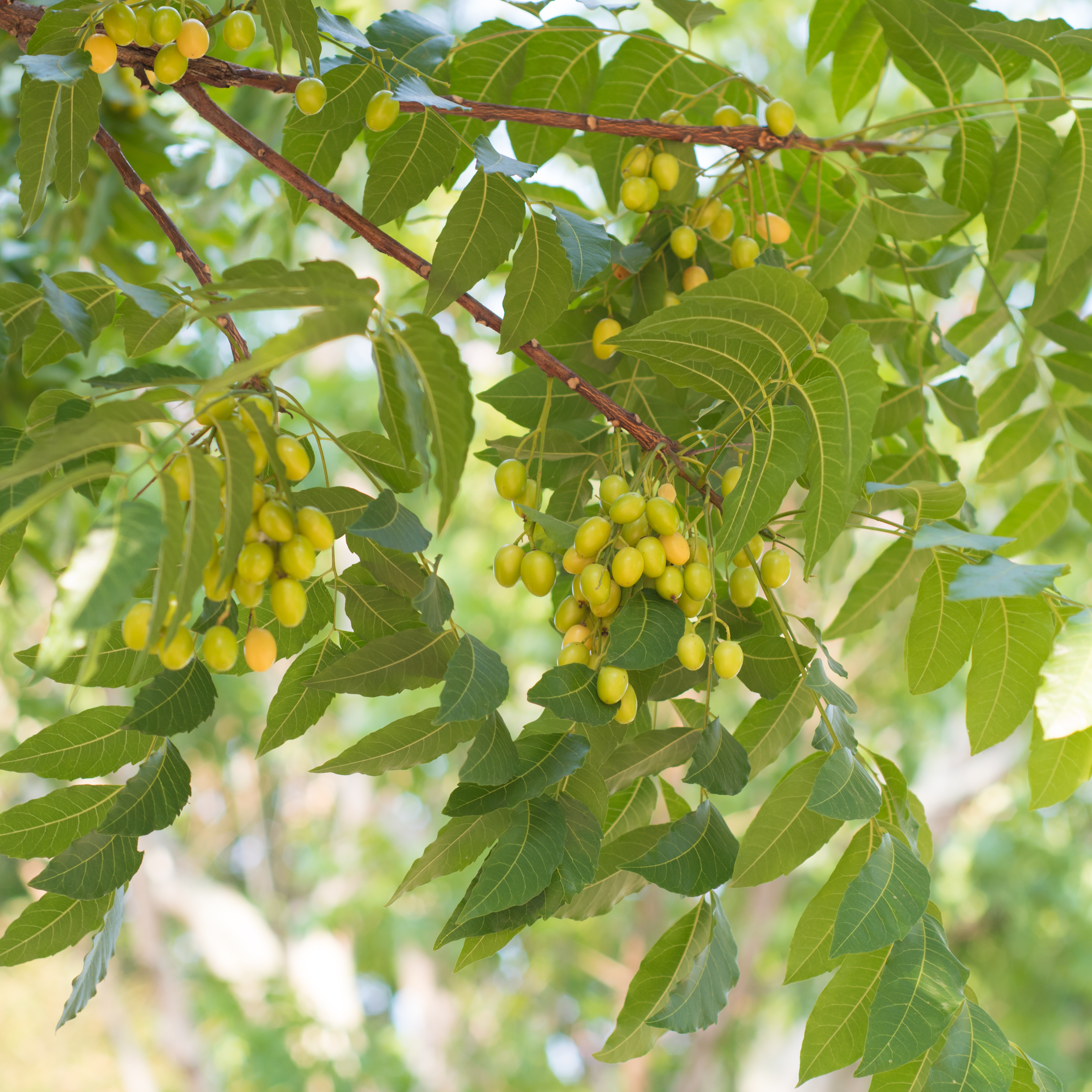Neem
(Azadirachta indica)

Description
Azadirachta indica, commonly known as neem, nimtree or Indian lilac, and in Nigeria called dogoyaro or dogonyaro, is a tree in the mahogany family Meliaceae. It is one of two species in the genus Azadirachta, and is native to the Indian subcontinent and most of the countries in Africa. It is typically grown in tropical and semi-tropical regions. Neem trees also grow on islands in southern Iran. Its fruits and seeds are the source of take oil. Neem is a fast-growing tree that can reach a height of 15–20 metres, and rarely 35–40 m (115–131 ft). It is deciduous, shedding many of its leaves during the dry winter months. The branches are wide and spreading. The fairly dense crown is roundish and may reach a diameter of 20–25 m (66–82 ft). The neem tree is similar in appearance to its relative, the chinaberry (Melia azedarach). The opposite, pinnate leaves are 20–40 cm (8–16 in) long, with 20 to 30 medium to dark green leaflets about 3–8 cm (1+1⁄4–3+1⁄4 in) long. The terminal leaflet often is missing. The petioles are short. White and fragrant flowers are arranged in more-or-less drooping axillary panicles which are up to 25 cm (10 in) long. The inflorescences, which branch up to the third degree, bear from 250 to 300 flowers. An individual flower is 5–6 mm (3⁄16–1⁄4 in) long and 8–11 mm (5⁄16–7⁄16 in) wide. Protandrous, bisexual flowers and male flowers exist on the same individual tree. The fruit is a smooth (glabrous), olive-like drupe which varies in shape from elongate oval to nearly roundish, and when ripe is 14–28 mm (1⁄2–1+1⁄8 in) by 10–15 mm (3⁄8–5⁄8 in). The fruit skin (exocarp) is thin and the bitter-sweet pulp (mesocarp) is yellowish-white and very fibrous. The mesocarp is 3–5 mm (1⁄8–1⁄4 in) thick. The white, hard inner shell (endocarp) of the fruit encloses one, rarely two, or three, elongated seeds (kernels) having a brown seed coat. The neem tree is often confused with a similar looking tree called bakain. Bakain also has toothed leaflets and similar looking fruit. One difference is that neem leaves are pinnate but bakain leaves are twice- and thrice-pinnate. Neem leaves are dried in India and placed in cupboards to prevent insects eating the clothes, and also in tins where rice is stored. The flowers are also used in many Indian festivals like Ugadi. The tender shoots and flowers of the neem tree are eaten as a vegetable in India. A soup-like dish called veppampoo charu in Tamil made of the flower of neem is prepared in Tamil Nadu.
Taxonomic tree:







